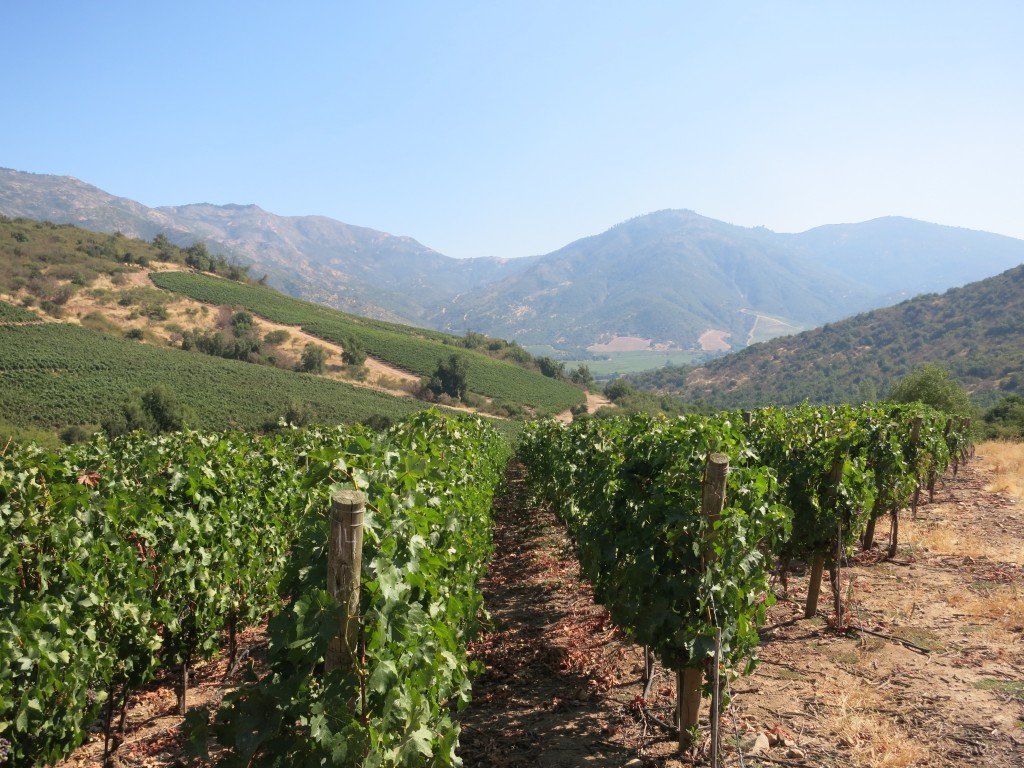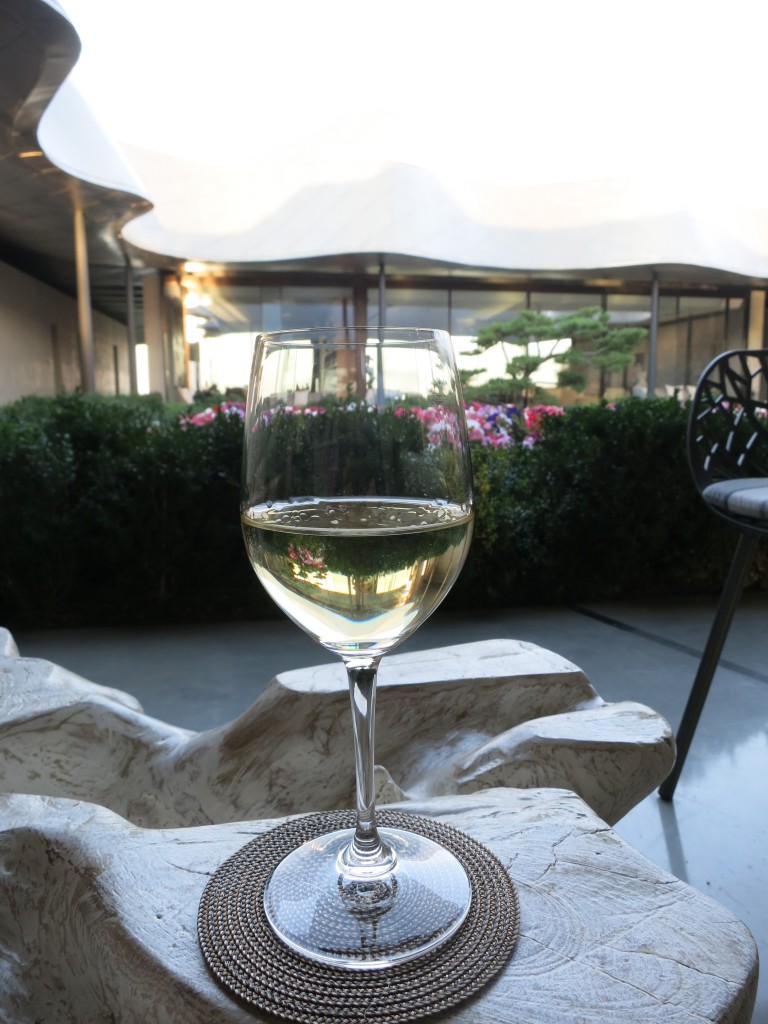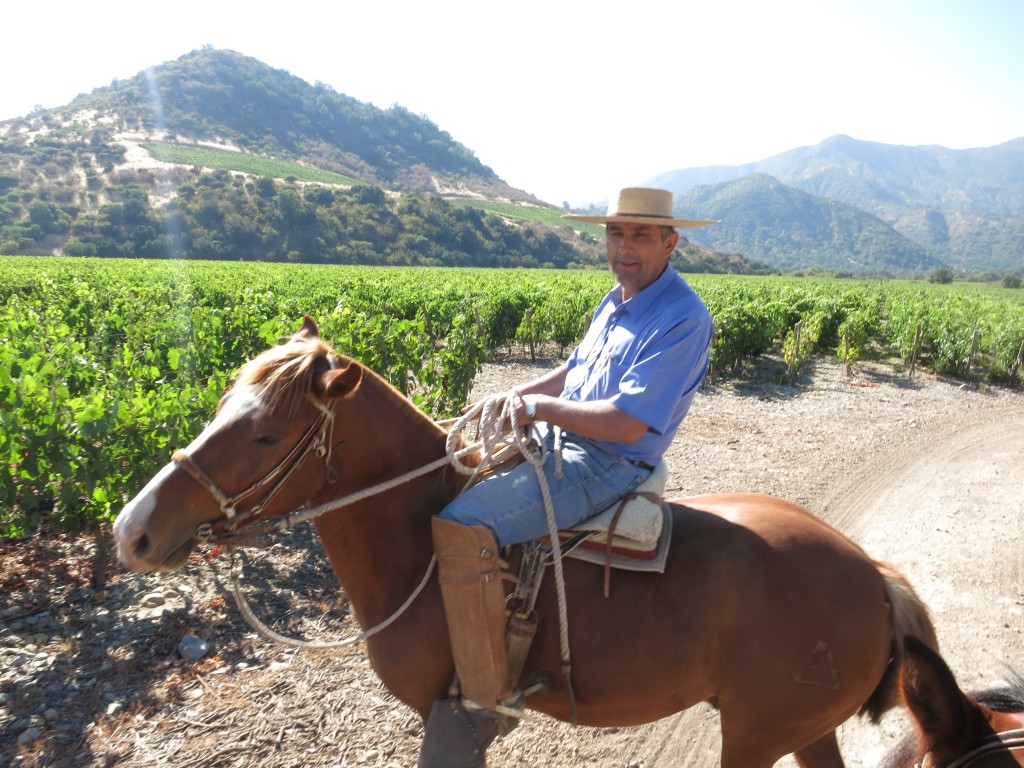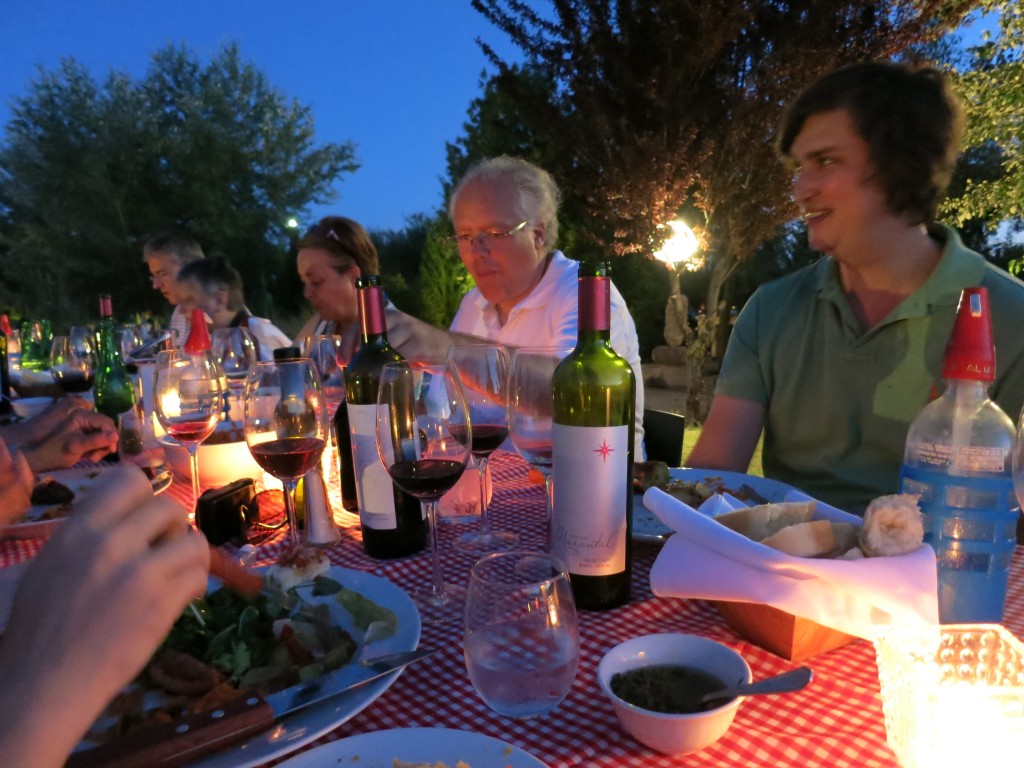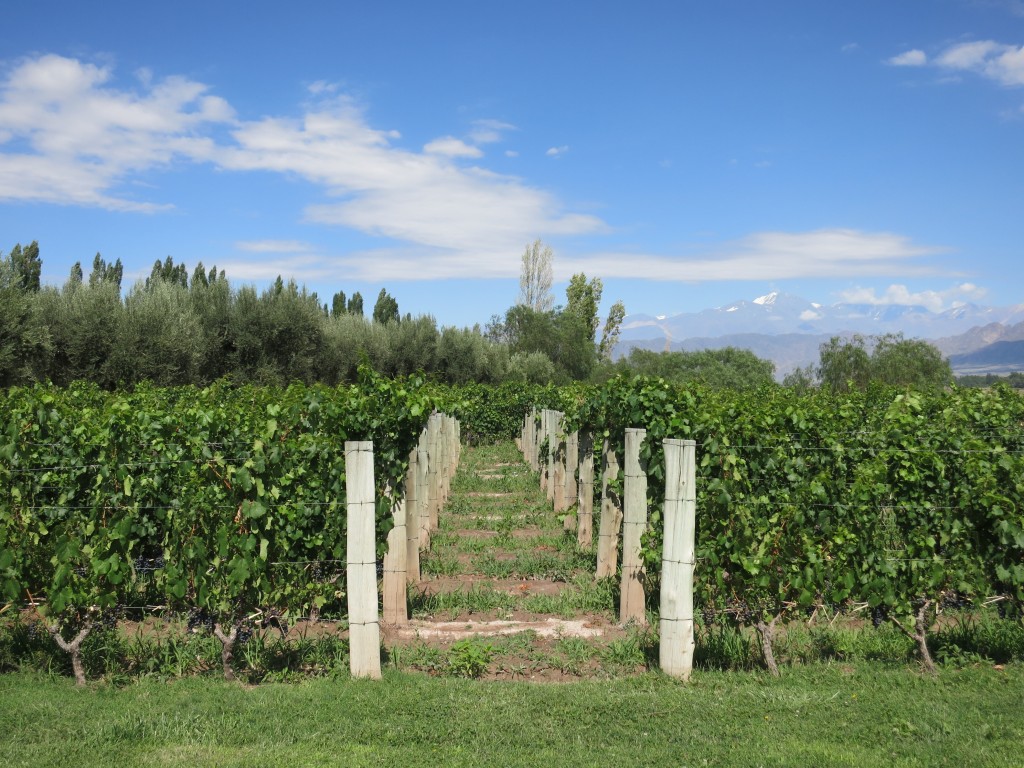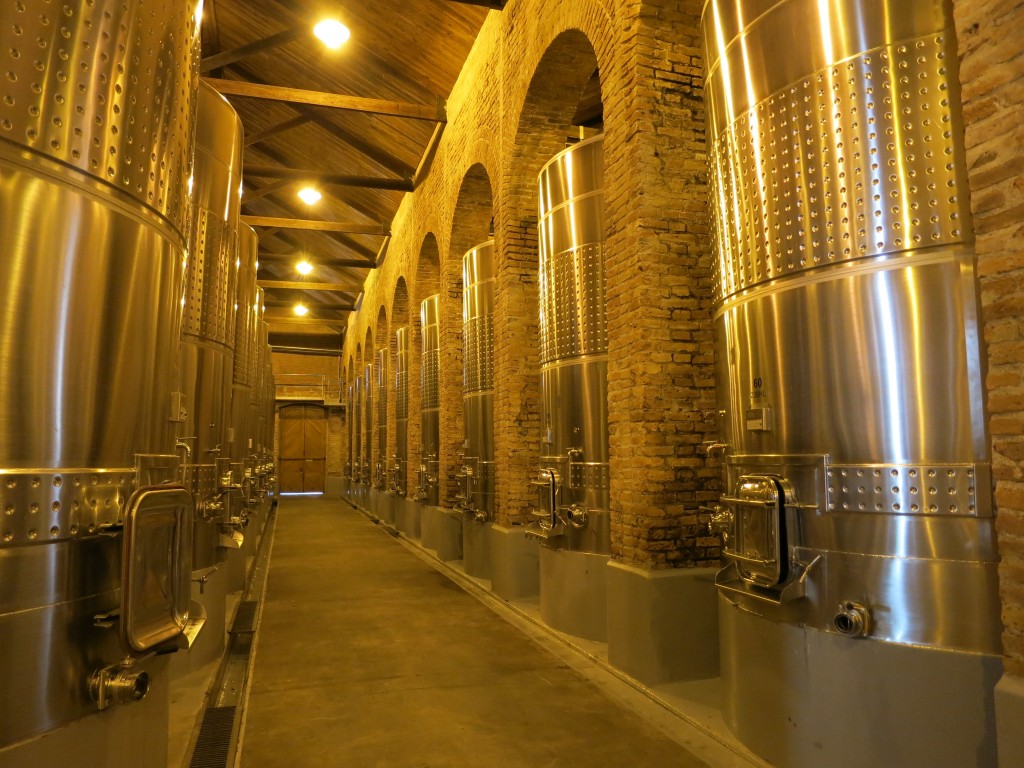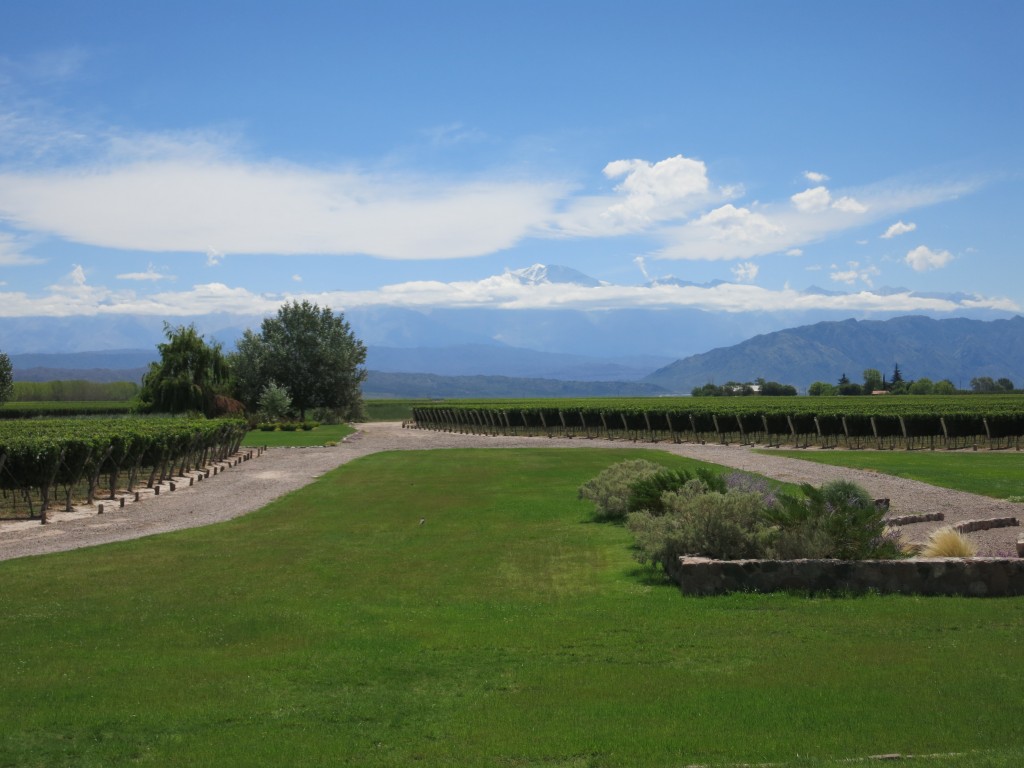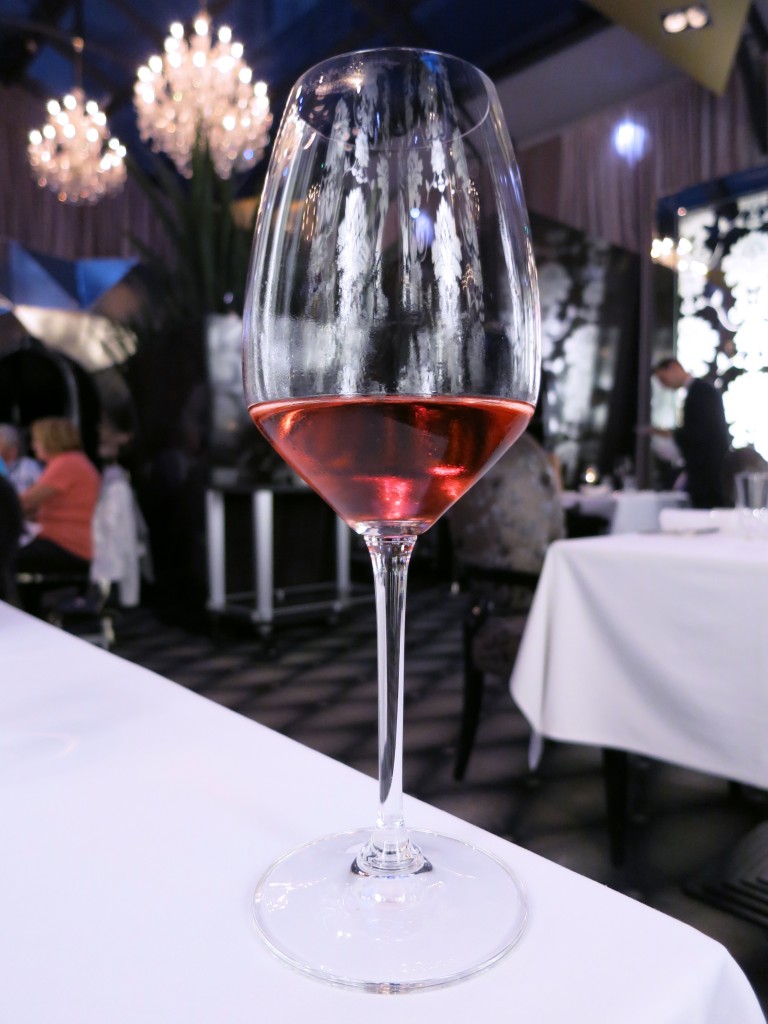
A fun and fruity 2011 Posta Kadarka from Szekszárd, Hungary
This list, especially when taken together with my companion list of whites, illustrates how absolutely delicious wines are being made in all sorts of unexpected places all over the globe. Nowadays, there is simply no reason to confine your drinking to wines from two or three classic regions.
Taking a risk on something lesser-known can reap significant rewards, both in terms of saving money and broadening the palate.
The planet is encircled with tremendous wine-making talent. Fantastic wine makers can be found in just about every wine region on the map, and just as important, insightful wine growers are exploiting vineyard sites to their full potential, finding new terroir for classic grapes as well as resurrecting nearly forgotten ancient varieties rich in character and history.
We wine lovers have never had it better, whether we’re in Chile, California, Colorado or Croatia. Cheers to the vintners in far-flung places taking risks on unorthodox wines, hoping that we’ll notice their beauty, and cheers to the importers, restaurants and wine shops courageous enough to work with them. My life is much the richer for it.
The most memorable reds I tasted in 2014, in alphabetical order:
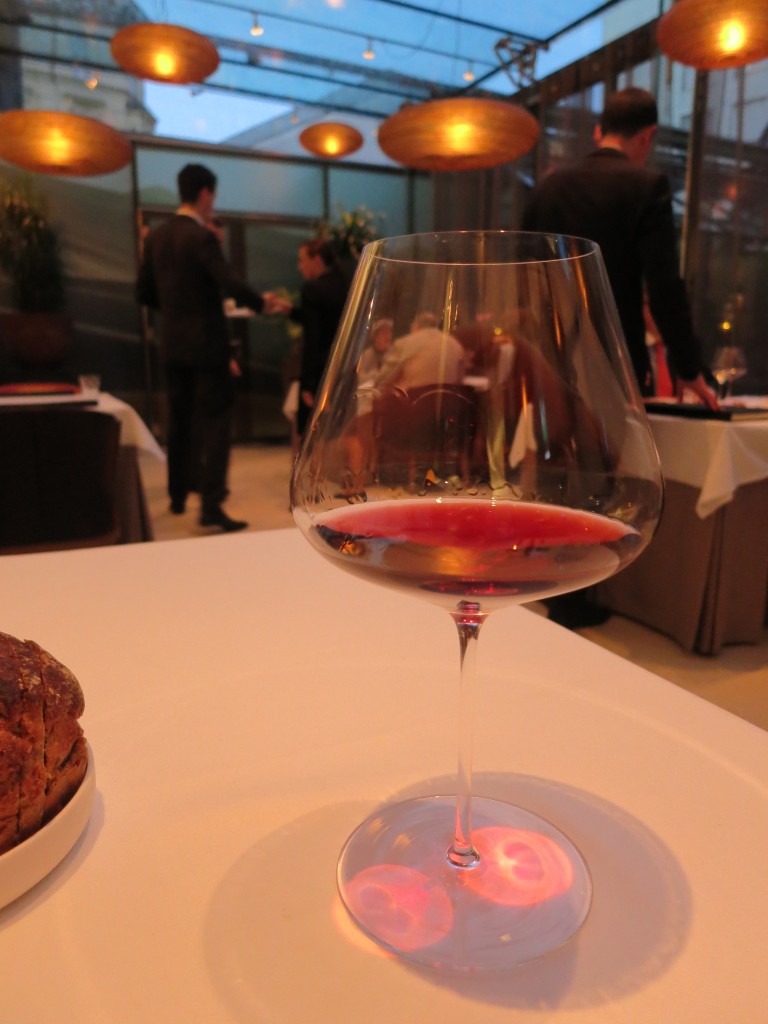
Ciprian Pinot Noir in Vienna’s Silvio Nickol restaurant
2009 CIPRIAN BARRIQUE PINOT NOIR, ZIZERS AOC
The adventurous sommelier at Silvio Nickol in Vienna poured me a glass of this extraordinary Swiss Pinot Noir from Zizers, a little-known AOC in Graubünden, set on the Rhein River just south of Liechtenstein. I don’t usually quote directly from the notes I take while tasting, but I’ll make an exception in this case and quote from my notebook at length:
“Gorgeously balanced — exquisite surprise! Great finesse. Earth, deep red fruit, elegant acids, aromatic cherry finish. Light, joyous, refined — how do I get some?? Chills down spine!”
The Swiss export almost none of their wines to the United States, unfortunately.
2009 DUXOUP CHARBONO
Only about 89 acres of Charbono vines remain in California, and Duxoup makes one of the best Charbono varietals. The winery sources its fruit from the Frediani Vineyard, comprising 10 acres of old Charbono vines along the Silverado Trail: “The most sought-after Charbono on the planet,” according to The Wine News.
The wine was a pleasure in every respect, with aromas of rich, dark berries and plum. Forceful and big, it tasted of ripe, dark, dusky fruit, and I was impressed by its focused acids and well-balanced tannins. I don’t often spend $20 on a bottle of wine, but for something so rare and well-crafted, $20 seems like a steal. (The current vintage is 2011.)
2010 GRAN ENEMIGO GUALTALLARY SINGLE VINEYARD
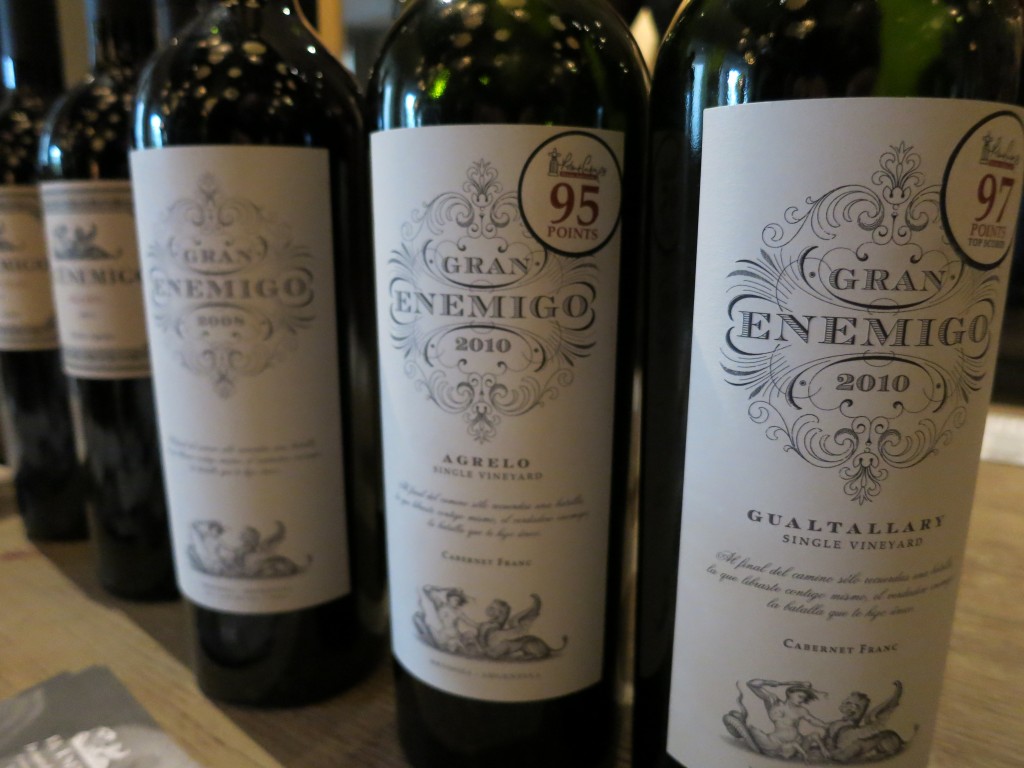
A lineup of The Enemy
El Enemigo is a side project of the winemaker of Catena Zapata, one of Argentina’s most highly regarded wineries. Its name refers to “the enemy in ourselves, the one stopping us from trying something different — something extraordinary,” explained Enemigo representative Constanza Hartung. The wines she presented, with one exception, did not rely heavily on Malbec or even Cabernet Sauvignon. Instead, these blends showcased Cabernet Franc.
In this blend of 85% Cabernet Franc and 15% Malbec, there was a freshness to the aroma, but it had notable undertones of earth and dark fruit. When I tasted it, I just thought, “Wow.” It was lush and rich, but simultaneously focused and clean. Quite a balancing act.
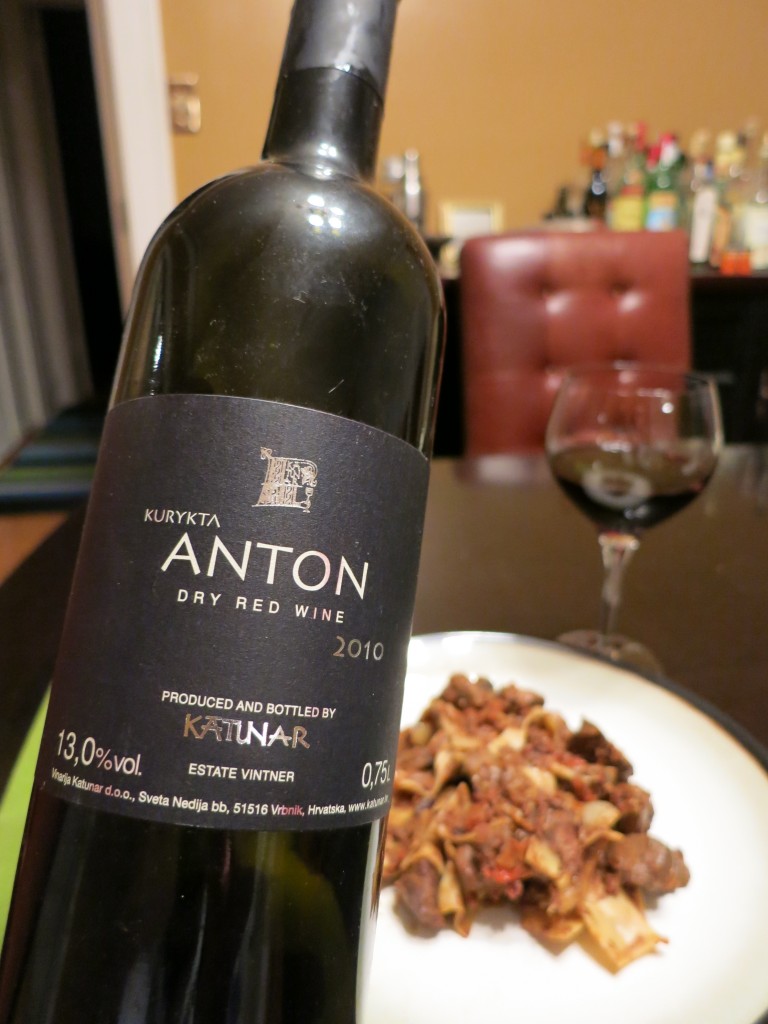
Katunar “Kurykta Anton” Syrah, with boeuf Bourguignon
2010 KATUNAR “KURYKTA ANTON”
The Katunar vineyards have an enviable location on the south end of the island of Krk, just southeast of the Istrian peninsula. Father and son Anton and Toni Katunar exploit their fine terroir fully. The 2010 Katunar “Kurykta Anton” was thoroughly delicious.
Referred to as Kurykta Nigra on the Katunar website, this deep magenta-hued Syrah had an instantly appealing aroma of earth, iron and red fruit. It felt very well-balanced, with a rich texture and luscious red-fruit flavors leavened by deep undertones of earth and a bright zing of acids. I also loved the overtones of violets and the tightly focused metallic finish. The rustic acids helped the wine pair beautifully with some traditional boeuf Bourguignon, standing up to the hearty flavors in the dish and clearing the palate for the next bite.
2010 LAPOSTOLLE PIRQUE VINEYARD SYRAH
One of six unusual single-vineyard Syrahs that the estimable Chilean winery Lapostolle recently assembled in a special half-case, the Pirque had notes of chocolate and violets in its dark fruit aroma. It felt silky on the tongue and revealed itself slowly, deliberately. There was a freshness underneath its ripe, ripe fruit, like eucalyptus or green peppercorn. Sexy and very classy. (The single-vineyard Carmenères are also excellent.)
The half-case of single-vineyard Syrahs (or Carmenères) would make an excellent gift, should you have a oenophile in your life that you wish to impress. It’s great fun to compare and contrast the wines side-by-side, to see the effects of the different terroirs.
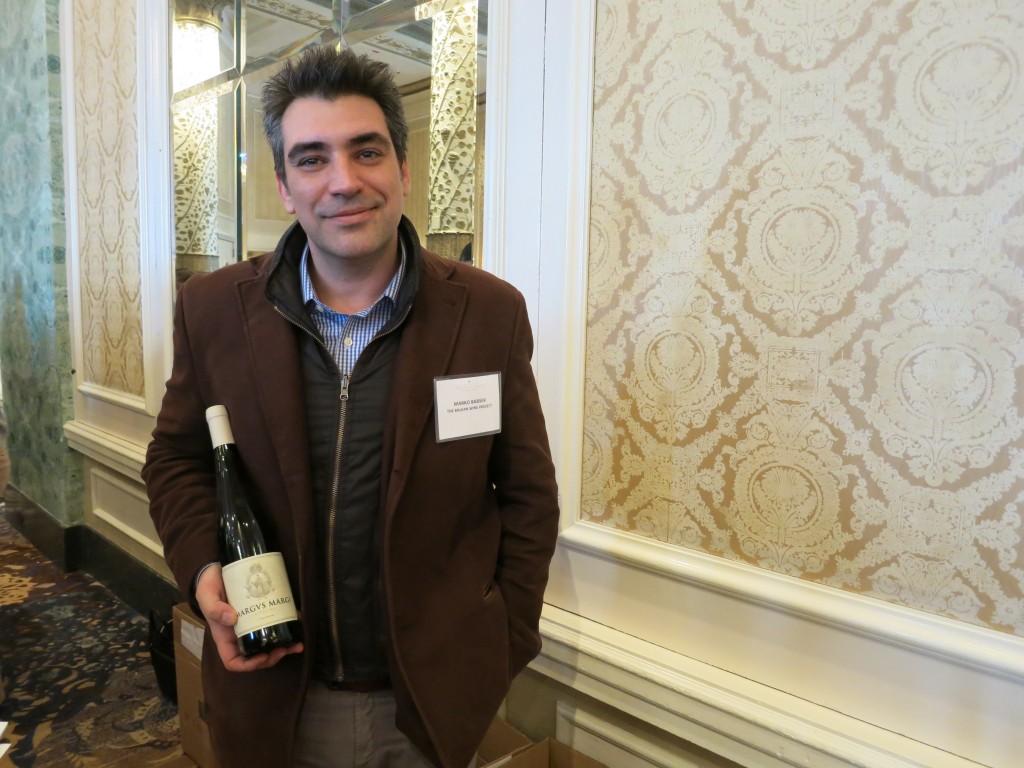
Marko Babsek of the Balkan Wine Project, introducing me to Stobi Vranec
2011 STOBI VRANEC
Tiny, landlocked Macedonia lies on the northern border of Greece, making it the southernmost of the former Yugoslav republics. Stobi is one of its largest wineries, and it used to export bulk wine to the Soviet Union before retooling to concentrate on quality instead of just quantity.
I’ll always have a soft spot for Vranec (also spelled “Vranac”), an ancient red variety native to the Balkans with a parent/offspring relationship to Zinfandel. It was a bottle of velvety Jović Vranac from Serbia which inspired this blog. This Macedonian expression had a ripe and lush dark-fruit aroma with an intriguing saline overtone. Very well-balanced, the wine had plummy fruit, a wonderful dusky quality and a spicy finish. Delightful.
2009 SUTCLIFFE FIELD BLEND
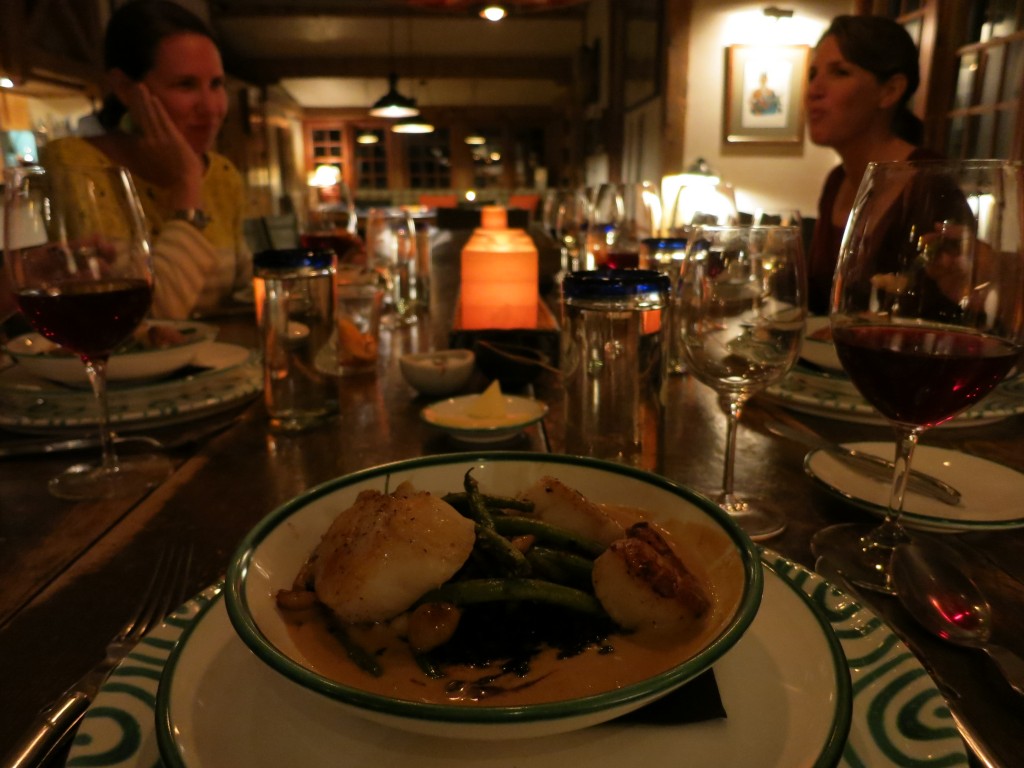
Dinner at Dunton Hot Springs paired with Sutcliffe wines
When I went to Colorado, I had no expectation of finding fine wine. Had I cracked open my Oxford Companion to Wine — always a good idea before heading off on a trip to pretty much anywhere — I would have discovered that “Colorado’s increasing vineyard area (nearly 1,000 acres) and growing number of wineries (over 50) are beginning to provide wines of quality to its major tourist market as well as Denver…” Sutcliffe is among those leading the charge.
Most blends occur in the winery, with a winemaker choosing so much of this and so much of that. A field blend occurs in the vineyard, blending whatever grape varieties happen to be growing together. This wine “gives the true taste of McElmo Canyon,” according to the Sutcliffe website. I loved its rich, dark-fruit aroma, and it had rich, creamy fruit on the palate. It had elegantly soft tannins and a dry finish, and it became even bigger and richer when paired with some “truffle tremor” cheese.
What fortune, to have tasted so many beautiful, unusual wines! I can’t wait to see what 2015 has in store.

